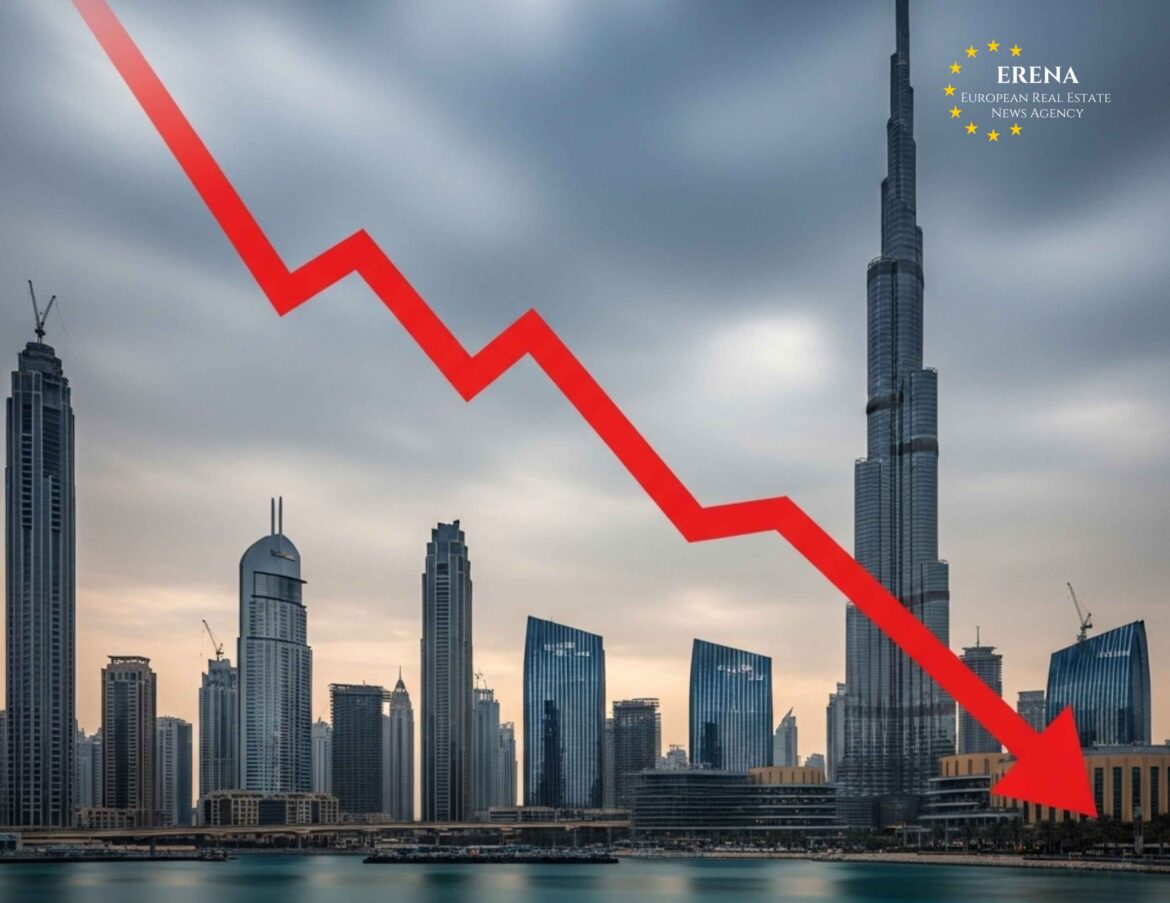Fitch Ratings has issued a forecast predicting a 15% decline in the Dubai real estate market in 2025. This warning comes amid mounting macroeconomic pressures, overreliance on external demand, and market oversupply. While Dubai’s residential and commercial property sectors have demonstrated resilience in recent years, analysts warn that a correction may now be inevitable.
Causes of the Expected Downturn
Overheating Prices
In the past two years, property prices in Dubai have surged dramatically. According to Property Monitor, average secondary market prices have risen by 20–25% since early 2023. Fitch considers this growth unsustainable, largely driven by speculative demand and short-term capital influx post-pandemic.
Tighter Financing Conditions
The global rise in interest rates is weighing on buyer activity. The Central Bank of the UAE, which aligns with U.S. Federal Reserve policy, raised its key rate to 5.4% in 2024. As a result, mortgages have become less affordable for both local and foreign buyers.
Oversupply in the Market
Dubai has significantly expanded its construction pipeline in recent years. By 2025, approximately 35,000 new residential units are expected to be delivered. This puts downward pressure on prices, particularly in mid-range and premium segments. Fitch highlights the risk of a “demand-supply mismatch” in areas with high development density such as Dubai Marina, Dubai Creek Harbour, and Dubai South.
At-Risk Market Segments
Residential Real Estate
Fitch is especially concerned about luxury apartments and villas, which saw a surge in purchases during 2023–2024 by investors from Russia, India, China, and Europe. This segment is expected to face the sharpest correction—up to 18% in price depreciation.
For instance, luxury villas in areas like Palm Jumeirah and Emirates Hills, which previously sold for more than €10 million, may lose €1.5–2 million in value over the next 12 months.
Commercial Real Estate
Office space is also under threat, particularly due to the growth of remote work and waning demand for premium offices. In business districts such as DIFC and Business Bay, vacancy rates have already reached up to 20%. Fitch forecasts rental rates to drop by 10–12% in these areas.
Retail spaces show more stability, though shops in tourist zones may be hit by reduced footfall caused by global economic uncertainty.
Market and Developer Response
Major developers such as Emaar, Nakheel, and Damac are already adjusting their strategies. More sales incentives and discounts are being offered during the off-plan phase, along with flexible payment terms and attractive mortgage packages in partnership with banks.
There’s also growing investment in build-to-rent developments, as well as efforts to diversify income streams through branded residences and short-term rentals, which remain popular among expats and digital nomads.
Geopolitical and Regulatory Risks
Fitch points out Dubai’s heavy reliance on foreign capital as a structural vulnerability. Sanctions, currency volatility, and political instability in source countries could disrupt investment inflows.
Ongoing Middle East tensions and Western restrictions on financial flows from certain regions may reduce the number of high-net-worth investors targeting Dubai real estate.
Meanwhile, Dubai’s government has refrained from introducing strict real estate regulations. Unlike Singapore or Hong Kong, there are no high taxes on secondary ownership or foreigner-specific restrictions. While this helps maintain investor interest, it also exposes the market to speculative risks.
Economic Impact on the Emirate
Real estate is a pillar of Dubai’s economy. According to Dubai Statistics Center, the construction and property sectors contributed around 22% to the emirate’s GDP in 2024. A 15% drop in market value could significantly slow GDP growth, especially if accompanied by a decline in tourism or global oil price volatility.
There may also be labor market implications, as construction remains a major employer, particularly of South Asian workers.
Forecast Scenarios
Fitch outlines three potential market trajectories:
- Base Case: A 15% decline during 2025 followed by stabilization and modest recovery in 2026, assuming moderate demand growth and easing interest rates.
- Pessimistic Scenario: A 20% fall followed by stagnation for 2–3 years, with a high proportion of unsold or vacant properties.
- Optimistic Scenario: A limited correction of 8–10%, provided there’s faster population growth, expanded immigration programs, and new policy incentives.
Implications for Investors
Analysts recommend a cautious approach to Dubai property in 2025. Focus should be on liquid, ready-to-move-in properties in established areas with infrastructure—such as Jumeirah Lakes Towers and Downtown Dubai—to minimize downside risk.
Projects in early construction stages or in overdeveloped districts may pose heightened risks.
Short-term rental properties still offer attractive yields. Despite price corrections, platforms like Airbnb can generate returns of 5–7% annually with proper property management.
Conclusion
Fitch’s projection of a 15% price decline in Dubai’s real estate sector highlights the fragility of the recent boom and its vulnerability to macroeconomic and geopolitical shocks. Despite the market’s strong post-pandemic performance, fundamental risks—from overheating to external political pressures—cast doubt on the sustainability of the current momentum.
For investors and buyers, 2025 is likely to be a year of strategic reassessment—shifting from speculative models toward more stable, income-generating investments. For developers, adapting to changing market conditions and focusing on actual demand over supply will be key to weathering the storm.
Dubai remains a global investment magnet, but preserving that status in the face of mounting risks will require a more balanced and resilient approach to real estate development.

